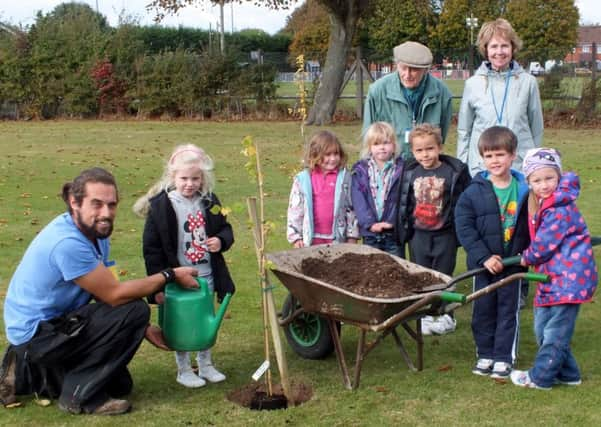Pupils plant elms to replace those lost to disease
This article contains affiliate links. We may earn a small commission on items purchased through this article, but that does not affect our editorial judgement.


Pupils from the reception class at the school in Lashmar Road assisted professional gardeners Peter Sturton and Daniel Hobden with the planting and watering of two disease-resistant elm saplings.
These trees have been funded by the East Preston and Kingston Preservation Society, while Peter and Daniel gave their services free.
Advertisement
Hide AdAdvertisement
Hide Ad“When we heard that new elm trees were to be planted in East Preston, we wanted to help,” said Peter.
A new and powerful strain of Dutch elm disease (so called because it had earlier been identified by Dutch experts) reached Britain from North America in the 1970s and caused the loss of over 25 million elms in the UK alone, devastating local landscapes, including the Warren recreation ground in East Preston.
Now, elms are being bred from trees which have survived the disease and which are assumed to be resistant to it.
The staff at East Preston Infant School, which is designated a forest school because of its environmental work with pupils, are planning to involve the current reception classes in the ongoing project to care for the young trees.
Advertisement
Hide AdAdvertisement
Hide AdA special assembly will explain the significance of the elms, which will then be included in various aspects of the curriculum.
The trees, of the Ulmus procera variety which tolerates sea air, will reach their full height of more than 60 feet in about 30 years’ time, so today’s reception class pupils can look forward to showing the results of their planting to their own children in the future.
Don’t miss out on all the latest breaking news where you live.
Here are four ways you can be sure you’ll be amongst the first to know what’s going on.
Advertisement
Hide AdAdvertisement
Hide Ad1) Make our website your homepage at www.littlehamptongazette.co.uk/
2) Like our Facebook page at www.facebook.com/LittlehamptonGazette
3) Follow us on Twitter @LhamptonGazette
4) Register with us by clicking on ‘sign in’ (top right corner). You can then receive our daily newsletter AND add your point of view to stories that you read here.
And do share with your family and friends - so they don’t miss out!
The Littlehampton Gazette - always the first with your local news.
Be part of it.